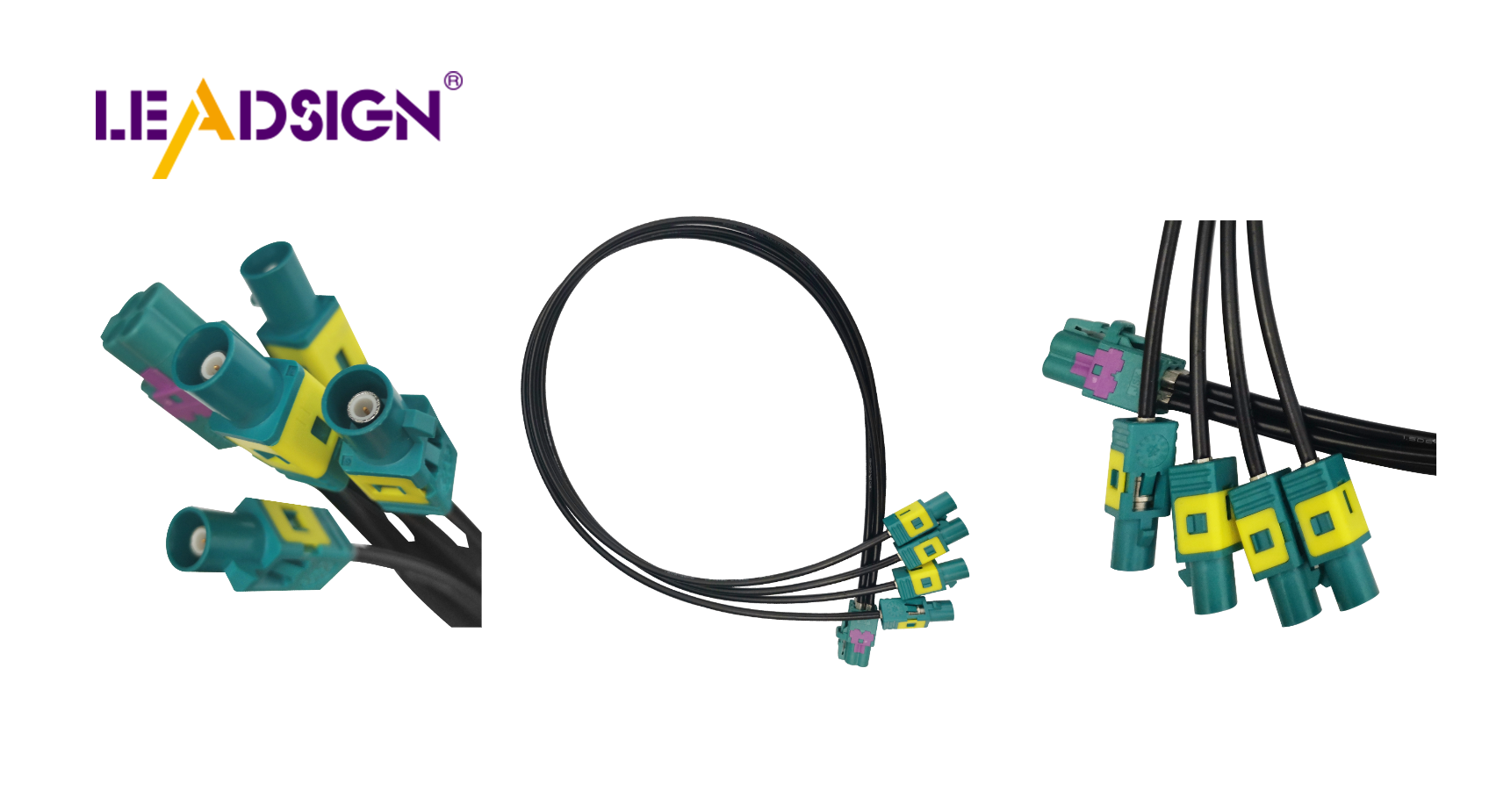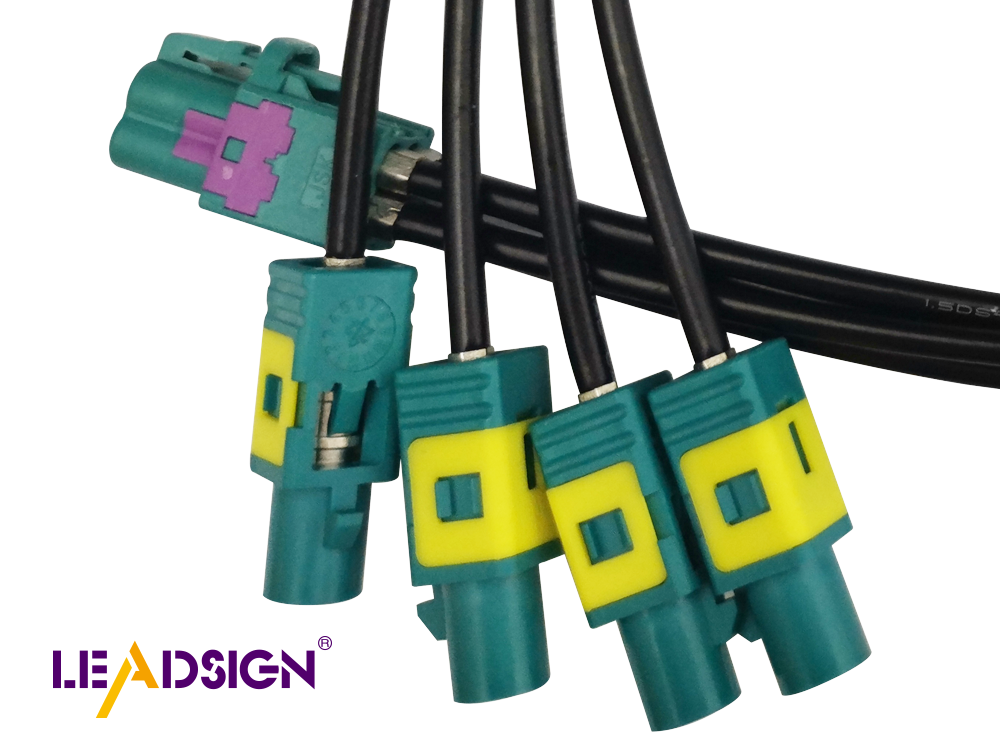Comparing Automotive Wires and RF Cables for Optimal Performance

Selecting the appropriate cables for vehicles is crucial. Automotive wire and RF cable play a vital role in ensuring optimal car performance. As technology advances, the demand for superior cables increases due to the rise of connected and smart vehicles. The market for automotive cables is expanding significantly. High-quality car systems enhance vehicle functionality and meet evolving requirements.
Understanding Automotive Wires

Automotive wires are key parts in cars. They help send electrical signals and power. Made from copper and aluminum, they are strong and good for electricity.
Types of Automotive Wires
Primary Wires
Primary wires are important for car electrical systems. They are usually made from PVC. These wires are flexible and conduct electricity well.
Battery Cables
Battery cables link the battery to the car's system. They handle lots of electricity. They use thick copper strands for strength.
Shielded Cables
Shielded cables stop electromagnetic interference. They keep signals clear in sensitive car electronics.
Specifications and Standards
Material Composition
Automotive wires mostly use copper or aluminum. Copper is great for conducting electricity, while aluminum is lighter.
Insulation Types
Materials like PVC, XLPE, and PP cover automotive wires. These protect them in tough car conditions.
Temperature Ratings
Automotive wires work in hot or cold places. They must perform well in both engine heat and winter cold.
Applications in Automotive Systems
Electrical Systems
Automotive wires power things like lights and ignitions. They make sure all parts get power to work right.
Engine Management
In engines, these wires send signals between sensors and controls. This helps the engine run smoothly.
Safety Systems
Safety systems like airbags need these wires for fast signals. They help keep passengers safe.
Learning About RF Cables
RF cables are important in cars today. They help send signals for different car functions. This makes sure communication and entertainment work well.
Kinds of RF Cables
Coaxial Cables
Coaxial cables are common RF cables. They carry high-frequency signals with little loss. This makes them great for TV, internet, and audio systems. They have a center wire, an insulating layer, a metal shield, and an outer cover to stop interference.
Twinaxial Cables
Twinaxial cables have two center wires instead of one. This helps them send data fast with low loss. They are used where keeping signal quality is important.
Triaxial Cables
Triaxial cables have more shielding than coaxial ones. This extra protection keeps signals clear in sensitive places like space and car industries.
Details and Rules
Impedance
Impedance shows how much a cable resists current flow. It affects how signals move through the cable. Matching impedance right stops signal reflection and loss.
Frequency Range
The frequency range tells what signals a cable can carry. Coaxial cables handle many frequencies, making them useful for many things.
Attenuation
Attenuation means signal strength drops as it moves through the cable. Less attenuation is better because it means less signal loss.
Uses in Car Systems
Communication Systems
RF cables help car parts talk to each other. They allow wireless connections and real-time chats between parts.
Infotainment Systems
In infotainment systems, RF cables bring good sound and video signals to screens and speakers for fun rides.
Navigation Systems
Navigation systems use RF cables to get GPS satellite signals. These make sure drivers find their way easily.
Comparing Features
How They Work
Signal Strength
Automotive wires and RF cables work differently with signals. Automotive wires focus on strong power flow and lasting strength. They make sure electricity moves well in a car. RF cables are best for sending high-frequency signals clearly. They keep communication clear in new systems.
Toughness
Both need to be tough. Automotive wires handle heat and shaking well. They use materials that last long without breaking. RF cables also need strength. They guard signals from getting mixed up or damaged.
Bending Ability
Bending is different for each one. Automotive wires bend easily around tight spots without snapping. RF cables don't bend as much but keep signal quality over long distances.
Money Matters
Starting Costs
Automotive wires cost less at first because they use common stuff like copper and PVC. RF cables, made for special tasks, can cost more due to fancy materials.
Upkeep Costs
Upkeep costs depend on how they're used. Automotive wires might need checks often because of engine heat and movement. RF cables stay stable but need careful handling to avoid losing signals.
Eco-Friendly Concerns
Being Green
Being green is important now. Automotive wires often use recyclable things like copper, cutting down waste. RF cables are harder to recycle because of their complex build.
Recycling Choices
Recycling choices differ too. Automotive wires recycle easier with simple parts, while RF cables need special ways to get back useful bits. Both industries aim for better eco-friendly methods.
"Picking the right cable affects how well it works, its price, and its impact on the planet.
Automotive wires and RF cables do different jobs in cars. Automotive wires are great for sending power. RF cables help with clear signals.
Main Tips:
Power Handling: Pick cables that handle power well without getting too hot.
Environmental Suitability: Choose cables with strong covers for tough places.
Application Needs: Think about how flexible they are and what you need them for.
Choosing the right cables helps cars work better. This means they stay safe, efficient, and eco-friendly.
See Also
Enhancing Automotive Data Transfer: Innovative Connectors and Wiring
Significance of FAKRA Coaxial Wiring in Auto Industry
Benefits of HFM Radio Frequency Connectors in Auto Tech

